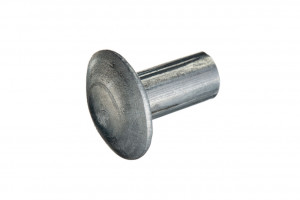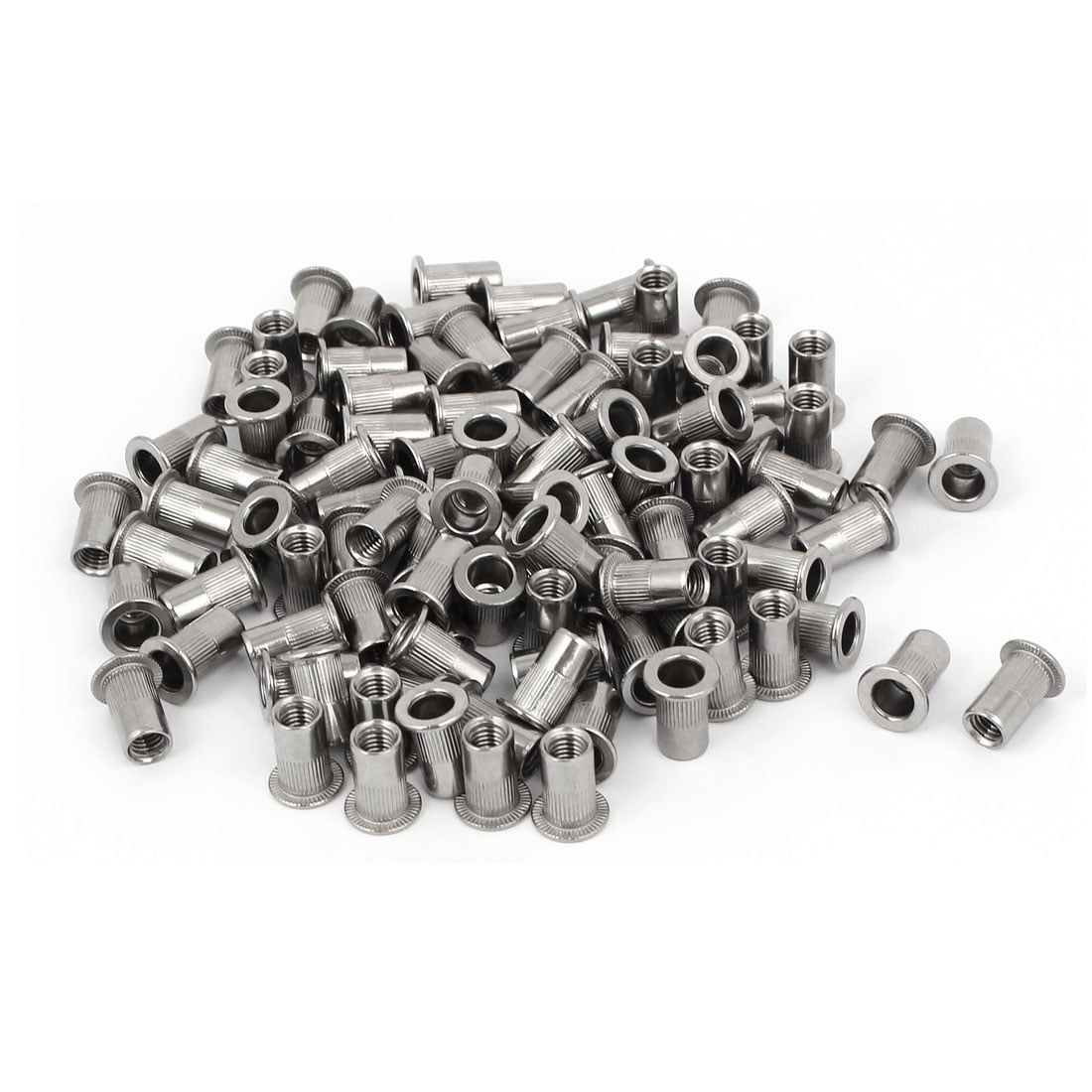

2000 during work to reinforce the structure to resist seismic loads.

High-strength structural steel rivets An original structural steel rivet from the Golden Gate Bridge (1937). Solid rivets are also used by some artisans in the construction of modern reproduction of medieval armour, jewellery and metal couture. Applications where only one side is accessible require "blind" rivets. Solid rivets are driven using a hydraulically, pneumatically, or electromagnetically actuated squeezing tool or even a handheld hammer. The setting of these fasteners requires access to both sides of a structure. Steel rivets can be found in static structures such as bridges, cranes, and building frames. "Ice box" aluminium alloy rivets harden with age, and must likewise be annealed and then kept at sub-freezing temperatures (hence the name "ice box") to slow the age-hardening process. Some aluminium alloy rivets are too hard to buck and must be softened by solution treating ( precipitation hardening) prior to being bucked. Typical materials for aircraft rivets are aluminium alloys (2017, 2024, 2117, 7050, 5056, 55000, V-65), titanium, and nickel-based alloys (e.g., Monel). Such rivets come with rounded (universal) or 100° countersunk heads. Hundreds of thousands of solid rivets are used to assemble the frame of a modern aircraft. A typical application for solid rivets can be found within the structural parts of aircraft. Solid rivets are used in applications where reliability and safety count. The woman on the left operates an air hammer, while the man on the right holds a bucking bar. Riveting team working on the cockpit shell of a C-47 transport at the plant of North American Aviation.
#Rivet insert install
A rivet compression tool does not require two people and is generally the most foolproof way to install solid rivets. This tool is mainly used on rivets close to the edge of the fastened material since the tool is limited by the depth of its frame. A rivet compression or crimping tool can also deform this type of rivet. Solid rivets consist simply of a shaft and head that are deformed with a hammer or rivet gun. Solid rivets are one of the oldest and most reliable types of fasteners, having been found in archaeological findings dating back to the Bronze Age. Solid/round head rivets A typical technical drawing of a universal head solid rivet There are several types of rivets, designed to meet different cost, accessibility, and strength requirements: The rivets themselves were essentially short rods of metal, which metalworkers hammered into a pre-drilled hole on one side and deformed on the other to hold them in place. Archeologists have also uncovered many Bronze Age swords and daggers with rivet holes where the handles would have been. Rivet holes have been found in Egyptian spearheads dating back to the Naqada culture of between 44 B.C. ( November 2022) ( Learn how and when to remove this template message) Unsourced material may be challenged and removed. Please help improve this section by adding citations to reliable sources. However, it is much more capable of supporting shear loads (loads perpendicular to the axis of the shaft).įastenings used in traditional wooden boat building, such as copper nails and clinch bolts, work on the same principle as the rivet but were in use long before the term rivet was introduced and, where they are remembered, are usually classified among nails and bolts respectively. To distinguish between the two ends of the rivet, the original head is called the factory head and the deformed end is called the shop head or buck-tail.īecause there is effectively a head on each end of an installed rivet, it can support tension loads. In other words, the pounding or pulling creates a new "head" on the tail end by smashing the "tail" material flatter, resulting in a rivet that is roughly a dumbbell shape. On installation, the rivet is placed in a punched or drilled hole, and the tail is upset or bucked (i.e., deformed), so that it expands to about 1.5 times the original shaft diameter, holding the rivet in place. The end opposite the head is called the tail. Before being installed, a rivet consists of a smooth cylindrical shaft with a head on one end. Brown (December 2014).Ī rivet is a permanent mechanical fastener.

Permanent mechanical fastener Solid rivets Sophisticated riveted joint on a railway bridge Riveters work on the Liberty ship SS John W.


 0 kommentar(er)
0 kommentar(er)
